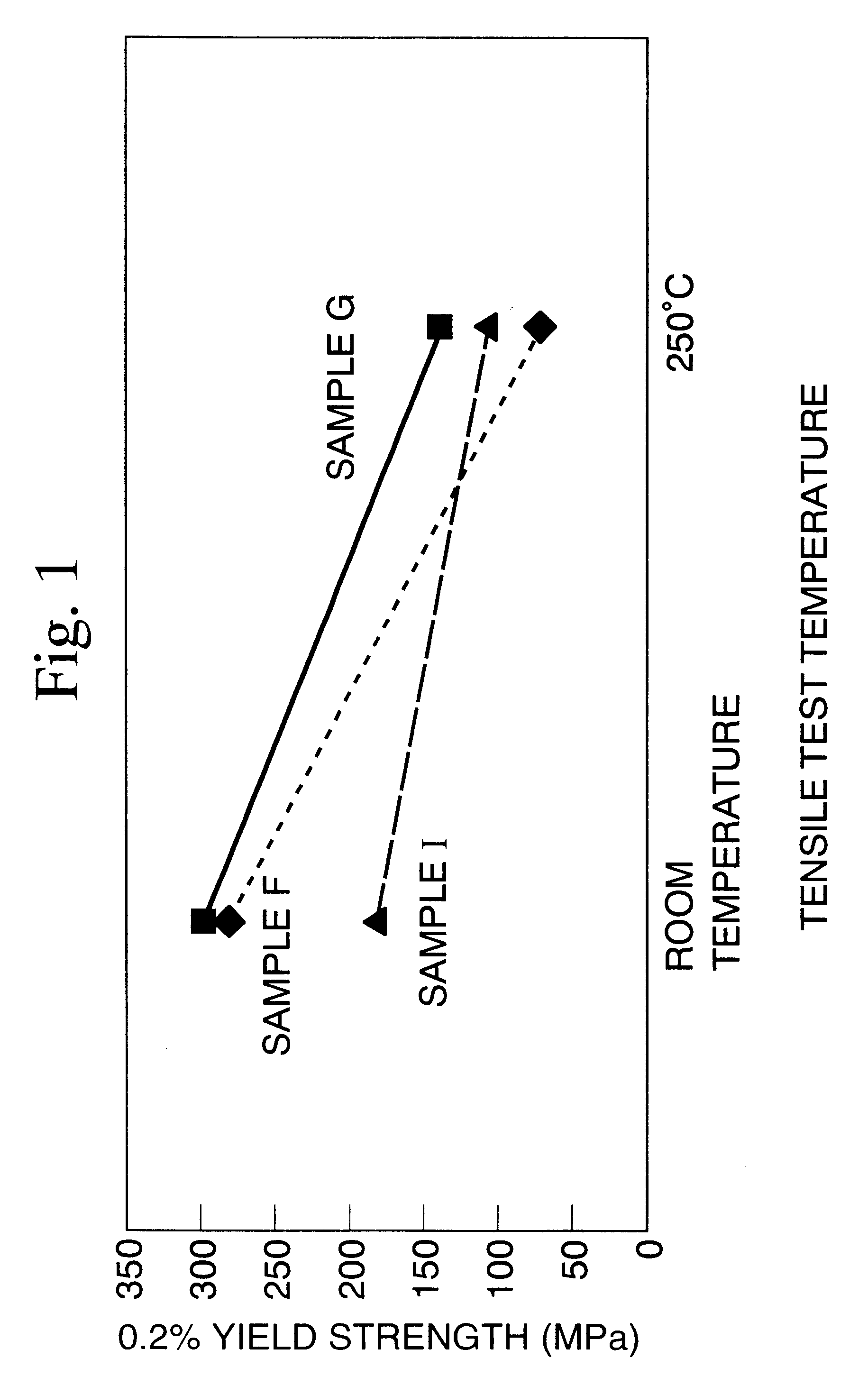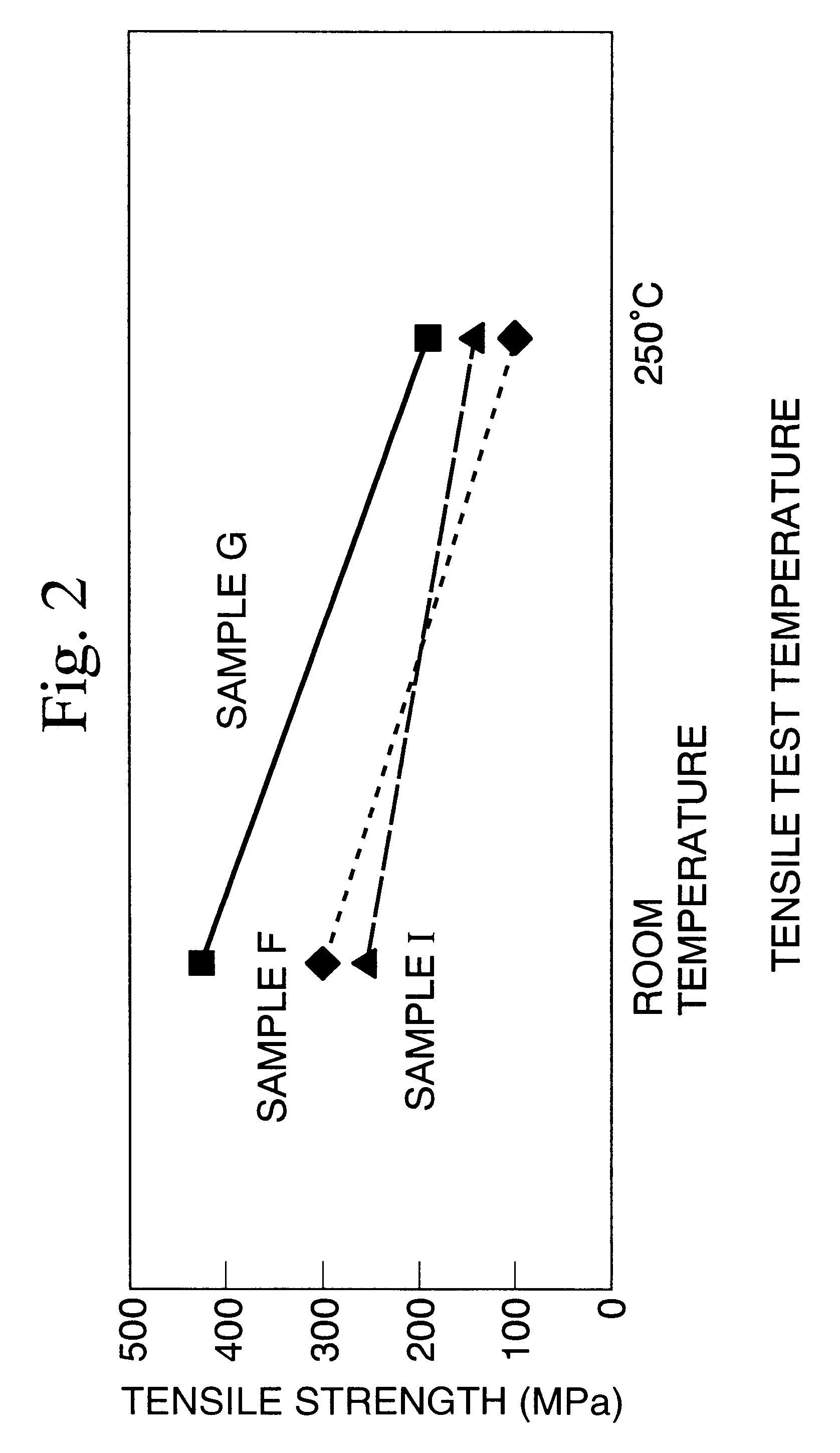Aluminum composite material having neutron-absorbing ability
a composite material and aluminum technology, applied in the direction of nuclear engineering, nuclear elements, nuclear engineering solutions, etc., can solve the problems of large cost and practical application cost, complex process, and use as a structural material, and achieve superior mechanical properties and workability, and enhanced neutron absorbing power
- Summary
- Abstract
- Description
- Claims
- Application Information
AI Technical Summary
Benefits of technology
Problems solved by technology
Method used
Image
Examples
example 1
Here, pure Al powder classified to 250 .mu.m or less (mean: 118 .mu.m), and each of the powders of 6061Al, 2219Al and Fe-based Al classified to 150 .mu.m or less (mean: 95 .mu.m) were used. In addition, B.sub.4 C for metal addition having a mean particle size of 23 .mu.m was used as the added particles.
(1) In the First Stage, the Above Powders and Added Particles were Mixed for 10-15 Minutes Using a Cross Rotary Mixer
Furthermore, in this experiment, although 12 types of samples were produced, the combinations of bases (1) through (4) and added particles (indicated with the value determined by calculating the weight percent of B) are as shown in Table 2.
In the second stage, a mixture of base powder and added particles is charged into a can and canning is performed. The specifications of the can used here are as shown below.
Material: JIS 6063 (aluminum alloy seamless tube with a bottom plate of the same material welded around its entire circumference)
Diameter: 90 mm
Can thickness: 2 mm...
example 2
JIS6N01 composition powder produced by air atomization was classified to various sizes with a sieve. The sieve sizes used along with the mean particle size below the sieve and the classification yield in each case are shown in Table 5.
Although particle size distribution has the potential to fluctuate slightly depending on the alloy composition and atomization conditions, it was able to be confirmed that, as sieve size became smaller, classification yield decreased rapidly. If assuming the premise of using at the industrial level, it must be unavoidably concluded that the use of powder having a particle size of 45 .mu.m or less, at which the classification yield falls to a single digit, would be unrealistic.
6N01 powder having each of the particle sizes shown in Table 5 and five types of B.sub.4 C particles shown in Table 1 were mixed in the combinations shown in Table 6. The amount of B.sub.4 C added was 3% by weight in all cases (2.3% by weight as B), and the mixing time was 10-15 m...
example 3
Billets were produced with the compositions and processes shown in Table 9 and submitted to extrusion at 430.degree. C.
The pure Al and Al--6Fe alloy powder used here were the same as those used in Example 1. The former consisted of air atomized powder classified to 250 .mu.m or less (mean particle size: 118 .mu.m), while the latter consisted of N.sub.2 gas atomized powder classified to 150 .mu.m or less (mean particle size: 95 .mu.m). In addition, the B.sub.4 C particles used had a mean particle size of 23 .mu.m.
The powder blended into each composition was mixed for 20 minutes with a cross rotary mixer. In the following processes A through E, canning and vacuum heating degassing were performed using the same procedures as Examples 1 and 2 to produce billets that were then submitted to extrusion. At this time, the vacuum degassing temperature was 350.degree. C. in A, 480.degree. C. in B, 550.degree. C. in C, 300.degree. C. in D and 600.degree. C. in E, and extrusion was performed at ...
PUM
| Property | Measurement | Unit |
|---|---|---|
| mean particle size | aaaaa | aaaaa |
| mean particle size | aaaaa | aaaaa |
| thickness | aaaaa | aaaaa |
Abstract
Description
Claims
Application Information
 Login to View More
Login to View More - R&D
- Intellectual Property
- Life Sciences
- Materials
- Tech Scout
- Unparalleled Data Quality
- Higher Quality Content
- 60% Fewer Hallucinations
Browse by: Latest US Patents, China's latest patents, Technical Efficacy Thesaurus, Application Domain, Technology Topic, Popular Technical Reports.
© 2025 PatSnap. All rights reserved.Legal|Privacy policy|Modern Slavery Act Transparency Statement|Sitemap|About US| Contact US: help@patsnap.com



